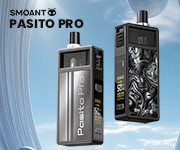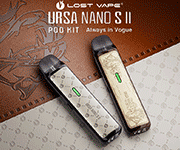Doodlebug
Postman
- Joined
- Sep 6, 2012
- Messages
- 126
Hi, all,
OK, this is the last one: Section 5 The Scientific Facts.
“Section 5
The Scientific Facts:
Propylene Glycol (PG) CAS 57-55-6
Vegetable Glycerine (VG or ‘Glycerol’) CAS 56-81-5
Nicotine CAS 54-11-5
Food-standard flavourings
“General Toxicity Observations
Upon reviewing the available toxicity information, the Agency has concluded that there are no endpoints of concern for oral, dermal, or inhalation exposure to propylene glycol and dipropylene glycol. This conclusion is based on the results of toxicity testing of propylene glycol and dipropylene glycol in which dose levels near or above testing limits (as established in the OPPTS 870 series harmonized test guidelines) were employed in experimental animal studies and no significant toxicity observed.”
and
“Carcinogenicity Classification
A review of the available data has shown propylene glycol and dipropylene glycol to be negative for carcinogenicity in studies conducted up to the testing limit doses established by the Agency; therefore, no further carcinogenic analysis is required.
Mutagenicity Potential
Propylene glycol and dipropylene glycol were tested for mutagenic or genotoxic potential and found to be negative in a battery of studies”.[ii]
“Propylene glycol does not present an acute, chronic, reproductive, or developmental hazard. Acute toxicity is very low, with LD50 values exceeding 19000 mg/kg after ingestion or skin contact. It is not a skin or eye irritant, and does not cause sensitization. The weight of the evidence indicates that it is not genotoxic in vitro or in vivo. Adequate long-term feeding studies are available which indicate that it does not represent a cancer hazard.”[iii]
“Glycerol is free from structural alerts, which raise concern for mutagenicity. Glycerol does not induce gene mutations in bacterial strains, chromosomal effects in mammalian cells or primary DNA damage in vitro.”
“…the weight of evidence indicates that glycerol is of low toxicity to aquatic organisms and this conclusion is supported by QSAR predictions. The lowest LC50 for fish is a 24-h LC50 of >5000 mg/l for Carassius auratus (Goldfish) and for aquatic invertebrates, a 24h EC50 of >10000 mg/l for Daphnia magna is the lowest EC50.”
“The weight of evidence indicates that glycerol is of low toxicity when ingested, inhaled or in contact with the skin.”
“For occupational exposure to glycerol mist, typically an exposure limit is applied based on the low toxicity of the aerosol. This value is 10 mg/m3 as an 8-hour time weighted average. (Belgium, Netherlands, Ireland, USA, UK).”
“It has a calculated half-life for photo-oxidation of ~7 hours and is not susceptible to hydrolysis. The experimental data indicate that glycerol is readily biodegradable under aerobic conditions.”
“No further work is indicated, because of the low hazard potential of this substance.”[v]
Cartridges and e-liquid for electronic cigarettes often contain 18mg/ml, but this is 1.8%, not 18%.
Due to a ‘quirk’ in the système internationale (SI) for weights and measures, the measurement of a litre does not ‘fit’ into this system. This means that it is quite common for mistakes to occur, as the size of the units is not the same, despite having the same prefix (milli, or thousandth).
One millilitre is a cubic centimetre (or cm3, which equates to one millionth of a cubic meter, the SI unit for volume) with a mass of around 1g (the exact value depends on the liquid in question). This means that a value in mg/ml is roughly equivalent to milligrams per gram, rather than the milligrams per milligram that a quick glance would lead you to assume.
This means that for a solution to contain 18% nicotine, it would have to have 180mg/ml.
For an adult non-smoker/non-nicotine addict, nicotine is toxic at a level of 30-60mg (0.5-1mg/kg).[vii]
This is precisely why ECITA has been working with its members across Europe to ensure that the correct hazard symbols, and risk and safety phrases are printed on the labels, and that electronic cigarette liquid be supplied in child-resistant containers, in accordance with the EU General Product Safety Regulations et al.
Despite the potential hazards of nicotine itself, the MHRA describes it as “a very safe drug”. With the correct risk and safety phrases, appropriate warning symbols, and child-resistant packaging, there can be no justification for restricting adult consumers’ access to electronic cigarette liquid.
The EU regulations with regards to Chemical Labelling and Packaging are sufficiently robust to allow adult consumers to handle household bleach, oven cleaner and other unpleasant chemical substances, and store such products in their homes for use, despite their far more noxious chemical content; there is no reason to suppose that these regulations would not be sufficiently robust to protect public health and safety where electronic cigarette products are concerned.
“Permissible Exposure Limit (PEL)
The current OSHA (Occupational Safety and Health Administration, USA) standard for nicotine is 0.5 milligram of nicotine per cubic meter of air (mg/m3) averaged over an eight-hour work shift.”[viii] The EU PEL is the same.[ix]
(These studies are still relevant, despite their dates. Consider the fact that the EU PEL was copyrighted as “IPCES, CEC 2005”. These studies have not been repeated or updated because the chemical profiles of the compounds under consideration have not changed in the intervening years.)
If we assume, for the sake of argument, that none of the nicotine vapourised is absorbed on inhalation, then to fill a 10m3 room (not a very big room at all!), you would need to vapourise 5mg of nicotine all at once. Any PEL has to be at a level at which there is no observable effect on anyone or anything, otherwise it would not be deemed a ‘permissible exposure limit’.
Nicotine oxidises readily, so to exceed the PEL, you would have to continuously vapourise 5mg of nicotine, and maintain that level in order for the PEL to be exceeded. This is simply not possible with existing ecig technology, nor is it desirable, so such technology is unlikely to be forthcoming.
The habit of vaping directly replaces the habit of smoking, and includes the natural (and often subconscious) self-regulation of nicotine intake: as a smoker reaches the limit of their own individual nicotine tolerance level, they are naturally induced to slow down or stop for a while before smoking again. Vaping works in precisely the same way.
Let us consider a ‘worst case scenario’:
The highest level of eliquid used by most vapers is 36mg/ml or 3.6%. (This is in the UK, where the highest level allowed is 7.5% (or 75mg/ml), according to the UK Poisons Act. Other EU countries such as Greece and France have a lower level of 2% (20mg/ml).) A ‘heavy user’ might consume 3ml over the course of a day. This means that this individual will have consumed a total of 108mg over the course of the day. If we assume a ‘day’ to mean 18 hours, this would be equal to 6mg per hour, or 6.75mg/hour over a 16 hour day, assuming 8 hours for sleep.
The indications for the Nicorette Inhaler suggest that the maximum recommended dose of nicotine over a 24 hour period is 160mg:
“NICORETTE® Inhaler
Nicotine 10 mg”
“For best results 6-12 cartridges should be used per day”[x]
with Pfizer suggesting:
“a maximum of 16 cartridges daily”[xi]
Nicotine has an elimination ‘half life’ of 100-150 minutes, according to 6 studies analysed and referenced in ‘Pharmacological Reviews’.[xii]
This means that nicotine is rapidly eliminated from the body with concentration dropping by half every 2 hours (approximately).
The levels of TSNAs (Tobacco-Specific Nitrosamines) detected by the FDA (back in May 2009) were too low to allow them to be quantified (i.e. they were too low for the actual amount present to be identified), but it was less than 0.0000021%. Indeed, the TSNAs detected by the FDA were below the level set for the Nicotrol Inhaler (which is approved for use worldwide). In its press release, the FDA made much of the fact that the Nicotrol Inhaler was used as a control. However, the level of TSNAs in the inhaler was not actually tested, making it of very limited use as a control for this test.[xiii]
This omission lead the manufacturer of the product tested to commission an independent third-party analysis of the FDA’s testing procedure for this so-called ‘scientific research’. This analysis – by a well-established company with accredited expertise – was very critical of both the methods used and the conclusions drawn, particularly with regard to TSNA levels.[xiv]
Indeed, a number of studies[xv] have found that the levels in medicinal NRT products and electronic cigarettes are comparable, yet no one has seen fit to alert the media so that the public can be warned about the ‘dangers’ of using NRT. According to public health physician, and respected international expert, Professor Dr Michael Siegel, MPH, MD:
“Had the FDA acted in an objective manner – it would have had to also urge the public not to use nicotine replacement products, since they have carcinogens in them.”[xvi]
The comparable levels of TSNAs are not surprising – both NRT and electronic cigarettes use pharmaceutical grade nicotine (being the highest grade available in quantity) sourced from tobacco plants. It is hard to see it as anything other than deliberate misinformation that the FDA chose not to include this vitally important fact in its press release.
In a study carried out in 2010, Professor Dr Siegel from Boston University argued that what we do know of e-cigarettes is already enough to conclude that they are far safer than real cigarettes. He says: “The truth is we know a lot more about what is in electronic cigarettes than in regular cigarettes. Our review shows that carcinogen levels in electronic cigarettes are up to 1,000 times lower than in tobacco cigarettes.”[xvii]
“One of the oft-repeated pseudo-arguments against the promotion of low-risk alternative nicotine products is that people who are interested in nicotine (that is, benefit from it in some way) but that have chosen not to smoke because of its detrimental health effects will start to use these low-risk products upon learning that they are, indeed, low-risk. These new users are not a problem, however, based on the views of most people – including most ethicists and policy analysts – that favor humanitarian concerns over the elimination of drug use for its own sake. Every such new user represents a win from the welfare perspective, since the provision of accurate information regarding the relative risks of products has allowed a person to make a rational choice to start consuming (and enjoying) something they otherwise would not have. In other words, it has provided a welfare improvement for someone who makes the rational judgment that the benefits exceed the costs. I am one such person.”[xviii]
Dr Phillips’ research, Debunking the claim that abstinence is usually healthier for smokers than switching to a low-risk alternative, and other observations about anti-tobacco-harm-reduction arguments finds that:
“for the average smoker, smoking for just one more month before quitting causes greater health risk than switching to a low-risk nicotine source and never quitting it. Thus, discouraging a smoker, even one who would have quit entirely, from switching to a low-risk alternative is almost certainly more likely to kill him than it is to save him.”[xix]
U.S. Food and Drug Administration, (1973), Select Committee on GRAS Substances (SCOGS) Opinion: Propylene Glycol, SCOGS Report Number 27
http://www.fda.gov/F…e/ucm261045.htm
[ii] United States Environmental Protection Agency, (2006), Reregistration Eligibility Decision for Propylene Glycol and Dipropylene Glycol, EPA-739-R-06-002
http://www.epa.gov/o…_glycol_red.pdf
[iii] Hernandez, O., (2001), SIDS Initial Assessment Report on 1,2-Dihydroxypropane, January 2001, UNEP Publications
http://www.inchem.or…ids/57-55-6.pdf
(Inchem is part of the International Program on Chemical Safety, a co-operative effort between international chemical safety and occupational health bodies.)
[iv] U.S. Food and Drug Administration, (1975), Select Committee on GRAS Substances (SCOGS) Opinion: Glycerin and Glycerides, SCOGS Report Number 30
http://www.fda.gov/F…e/ucm260418.htm
[v] Robertson, S., (2002), SIDS Initial Assessment Report on Glycerol, March 2002, UNEP Publications
http://www.inchem.or…/sids/56815.pdf
[vi] Higa de Landoni, J, (1991), Poison Information Monograph on Nicotine, PIM 373, March 1991
http://www.inchem.or….2.1.2 Children
[vii] Higa de Landoni, J, (1991), Poison Information Monograph on Nicotine, PIM 373, March 1991
http://www.inchem.or…:7.2.1.1 Adults
[viii] Centers for Disease Control, (1978), Occupational Health Guideline for Nicotine, March 1978
http://www.cdc.gov/n…3/pdfs/0446.pdf
[ix] IPCS Inchem, (2005), International Chemical Safety Card 0519 on Nicotine, (updated 2007)
http://www.inchem.or…sc/eics0519.htm
[x] Johnson & Johnson (New Zealand) Limited, (2011), Data Sheet for Nicorette® Inhaler, February 2011
http://www.medsafe.g…etteinh10mg.pdf
[xi] Pfizer, (2008), Nicotrol® Inhaler (nicotine inhalation system), LAB-0345-3.0, Revised December 2008
http://www.pfizer.co…rol_inhaler.pdf
[xii] The American Society for Pharmacology and Experimental Therapeutics, (2005), Pharmacological Reviews, Metabolism and Disposition Kinetics of Nicotine, vol. 57, no. 1, 79-115, March 2005
http://pharmrev.aspe….expansion.html
[xiii] Westenberger, B.J., (2009), Evaluation of e-cigarettes, Letter to Michael Levy, Supervisor Regulatory Counsel, CDER, Office of Compliance, Division of New Drugs and Labeling Compliance, May 4, 2009
http://www.fda.gov/d…h/UCM173250.pdf
[xiv] Lindsay, J.C., (2009), Technical Review and Analysis of FDA Report: “Evaluation of e-cigarettes”, Document no. 0900923.000 D0T0 JH08, July 30,2009
http://casaa.org/upl…FDA-Summary.pdf
[xv] Siegel, M., (2009), The Rest of the Story: Tobacco News Analysis and Commentary, Comparison of Carcinogen Levels Shows that Electronic Cigarettes are Much Safer Than Conventional Ones, July 30, 2009
http://tobaccoanalys…comparison.html
[xvi] Siegel, M., (2009), The Rest of the Story: Tobacco News Analysis and Commentary, Disingenuousness of the FDA’s Press Conference is Concerning; FDA and Anti-Smoking Groups are Committing Medical Malpractice on a Massive Scale, July 24, 2009
http://tobaccoanalys…fdas-press.html
[xvii] Boston University School of Public Health, (2010), Evidence Suggests E-Cigs Safer Than Cigarettes, Researcher Claims, The Insider, 16 December 2010
http://sph.bu.edu/in…her-claims.html
[xviii] Nissen, C.M., (2010), Tobacco Harm Reduction: News & Opinions, Coming out of the closet as the feared “new user” of low-risk nicotine products, 16 December 2010
http://smokles.wordp…otine-products/
[xix] Phillips, C.V., (2009), Debunking the claim that abstinence is usually healthier for smokers than switching to a low-risk alternative, and other observations about anti-tobacco-harm-reduction arguments, BioMed Central, Harm Reduction Journal 2009, 6:29, doi:10.1186/1477-7517-6-29
http://www.harmreduc…7-7517-6-29.pdf”
And that’s the lot! If you’ve stayed with it right through, thank you for your patience; if you’ve dipped in and out, I hope you’ve found it useful.

Happy vaping – and long may it continue!
Cheers,
Katherine
More...
OK, this is the last one: Section 5 The Scientific Facts.
“Section 5
The Scientific Facts:
- What’s in the liquid?
Propylene Glycol (PG) CAS 57-55-6
Vegetable Glycerine (VG or ‘Glycerol’) CAS 56-81-5
Nicotine CAS 54-11-5
Food-standard flavourings
- What happens when Propylene Glycol is inhaled?”
“General Toxicity Observations
Upon reviewing the available toxicity information, the Agency has concluded that there are no endpoints of concern for oral, dermal, or inhalation exposure to propylene glycol and dipropylene glycol. This conclusion is based on the results of toxicity testing of propylene glycol and dipropylene glycol in which dose levels near or above testing limits (as established in the OPPTS 870 series harmonized test guidelines) were employed in experimental animal studies and no significant toxicity observed.”
and
“Carcinogenicity Classification
A review of the available data has shown propylene glycol and dipropylene glycol to be negative for carcinogenicity in studies conducted up to the testing limit doses established by the Agency; therefore, no further carcinogenic analysis is required.
Mutagenicity Potential
Propylene glycol and dipropylene glycol were tested for mutagenic or genotoxic potential and found to be negative in a battery of studies”.[ii]
“Propylene glycol does not present an acute, chronic, reproductive, or developmental hazard. Acute toxicity is very low, with LD50 values exceeding 19000 mg/kg after ingestion or skin contact. It is not a skin or eye irritant, and does not cause sensitization. The weight of the evidence indicates that it is not genotoxic in vitro or in vivo. Adequate long-term feeding studies are available which indicate that it does not represent a cancer hazard.”[iii]
- “What about vegetable glycerine?”
“Glycerol is free from structural alerts, which raise concern for mutagenicity. Glycerol does not induce gene mutations in bacterial strains, chromosomal effects in mammalian cells or primary DNA damage in vitro.”
“…the weight of evidence indicates that glycerol is of low toxicity to aquatic organisms and this conclusion is supported by QSAR predictions. The lowest LC50 for fish is a 24-h LC50 of >5000 mg/l for Carassius auratus (Goldfish) and for aquatic invertebrates, a 24h EC50 of >10000 mg/l for Daphnia magna is the lowest EC50.”
“The weight of evidence indicates that glycerol is of low toxicity when ingested, inhaled or in contact with the skin.”
“For occupational exposure to glycerol mist, typically an exposure limit is applied based on the low toxicity of the aerosol. This value is 10 mg/m3 as an 8-hour time weighted average. (Belgium, Netherlands, Ireland, USA, UK).”
“It has a calculated half-life for photo-oxidation of ~7 hours and is not susceptible to hydrolysis. The experimental data indicate that glycerol is readily biodegradable under aerobic conditions.”
“No further work is indicated, because of the low hazard potential of this substance.”[v]
- “The liquid contains 18% nicotine.”
Cartridges and e-liquid for electronic cigarettes often contain 18mg/ml, but this is 1.8%, not 18%.
Due to a ‘quirk’ in the système internationale (SI) for weights and measures, the measurement of a litre does not ‘fit’ into this system. This means that it is quite common for mistakes to occur, as the size of the units is not the same, despite having the same prefix (milli, or thousandth).
One millilitre is a cubic centimetre (or cm3, which equates to one millionth of a cubic meter, the SI unit for volume) with a mass of around 1g (the exact value depends on the liquid in question). This means that a value in mg/ml is roughly equivalent to milligrams per gram, rather than the milligrams per milligram that a quick glance would lead you to assume.
This means that for a solution to contain 18% nicotine, it would have to have 180mg/ml.
- “But nicotine is highly toxic.”
For an adult non-smoker/non-nicotine addict, nicotine is toxic at a level of 30-60mg (0.5-1mg/kg).[vii]
This is precisely why ECITA has been working with its members across Europe to ensure that the correct hazard symbols, and risk and safety phrases are printed on the labels, and that electronic cigarette liquid be supplied in child-resistant containers, in accordance with the EU General Product Safety Regulations et al.
Despite the potential hazards of nicotine itself, the MHRA describes it as “a very safe drug”. With the correct risk and safety phrases, appropriate warning symbols, and child-resistant packaging, there can be no justification for restricting adult consumers’ access to electronic cigarette liquid.
The EU regulations with regards to Chemical Labelling and Packaging are sufficiently robust to allow adult consumers to handle household bleach, oven cleaner and other unpleasant chemical substances, and store such products in their homes for use, despite their far more noxious chemical content; there is no reason to suppose that these regulations would not be sufficiently robust to protect public health and safety where electronic cigarette products are concerned.
- “What about passive ‘vaping’?”
“Permissible Exposure Limit (PEL)
The current OSHA (Occupational Safety and Health Administration, USA) standard for nicotine is 0.5 milligram of nicotine per cubic meter of air (mg/m3) averaged over an eight-hour work shift.”[viii] The EU PEL is the same.[ix]
(These studies are still relevant, despite their dates. Consider the fact that the EU PEL was copyrighted as “IPCES, CEC 2005”. These studies have not been repeated or updated because the chemical profiles of the compounds under consideration have not changed in the intervening years.)
If we assume, for the sake of argument, that none of the nicotine vapourised is absorbed on inhalation, then to fill a 10m3 room (not a very big room at all!), you would need to vapourise 5mg of nicotine all at once. Any PEL has to be at a level at which there is no observable effect on anyone or anything, otherwise it would not be deemed a ‘permissible exposure limit’.
Nicotine oxidises readily, so to exceed the PEL, you would have to continuously vapourise 5mg of nicotine, and maintain that level in order for the PEL to be exceeded. This is simply not possible with existing ecig technology, nor is it desirable, so such technology is unlikely to be forthcoming.
- “What about the risk of overdose?”
The habit of vaping directly replaces the habit of smoking, and includes the natural (and often subconscious) self-regulation of nicotine intake: as a smoker reaches the limit of their own individual nicotine tolerance level, they are naturally induced to slow down or stop for a while before smoking again. Vaping works in precisely the same way.
Let us consider a ‘worst case scenario’:
The highest level of eliquid used by most vapers is 36mg/ml or 3.6%. (This is in the UK, where the highest level allowed is 7.5% (or 75mg/ml), according to the UK Poisons Act. Other EU countries such as Greece and France have a lower level of 2% (20mg/ml).) A ‘heavy user’ might consume 3ml over the course of a day. This means that this individual will have consumed a total of 108mg over the course of the day. If we assume a ‘day’ to mean 18 hours, this would be equal to 6mg per hour, or 6.75mg/hour over a 16 hour day, assuming 8 hours for sleep.
The indications for the Nicorette Inhaler suggest that the maximum recommended dose of nicotine over a 24 hour period is 160mg:
“NICORETTE® Inhaler
Nicotine 10 mg”
“For best results 6-12 cartridges should be used per day”[x]
with Pfizer suggesting:
“a maximum of 16 cartridges daily”[xi]
Nicotine has an elimination ‘half life’ of 100-150 minutes, according to 6 studies analysed and referenced in ‘Pharmacological Reviews’.[xii]
This means that nicotine is rapidly eliminated from the body with concentration dropping by half every 2 hours (approximately).
- “Electronic cigarettes contain cancer causing chemicals.”
The levels of TSNAs (Tobacco-Specific Nitrosamines) detected by the FDA (back in May 2009) were too low to allow them to be quantified (i.e. they were too low for the actual amount present to be identified), but it was less than 0.0000021%. Indeed, the TSNAs detected by the FDA were below the level set for the Nicotrol Inhaler (which is approved for use worldwide). In its press release, the FDA made much of the fact that the Nicotrol Inhaler was used as a control. However, the level of TSNAs in the inhaler was not actually tested, making it of very limited use as a control for this test.[xiii]
This omission lead the manufacturer of the product tested to commission an independent third-party analysis of the FDA’s testing procedure for this so-called ‘scientific research’. This analysis – by a well-established company with accredited expertise – was very critical of both the methods used and the conclusions drawn, particularly with regard to TSNA levels.[xiv]
Indeed, a number of studies[xv] have found that the levels in medicinal NRT products and electronic cigarettes are comparable, yet no one has seen fit to alert the media so that the public can be warned about the ‘dangers’ of using NRT. According to public health physician, and respected international expert, Professor Dr Michael Siegel, MPH, MD:
“Had the FDA acted in an objective manner – it would have had to also urge the public not to use nicotine replacement products, since they have carcinogens in them.”[xvi]
The comparable levels of TSNAs are not surprising – both NRT and electronic cigarettes use pharmaceutical grade nicotine (being the highest grade available in quantity) sourced from tobacco plants. It is hard to see it as anything other than deliberate misinformation that the FDA chose not to include this vitally important fact in its press release.
In a study carried out in 2010, Professor Dr Siegel from Boston University argued that what we do know of e-cigarettes is already enough to conclude that they are far safer than real cigarettes. He says: “The truth is we know a lot more about what is in electronic cigarettes than in regular cigarettes. Our review shows that carcinogen levels in electronic cigarettes are up to 1,000 times lower than in tobacco cigarettes.”[xvii]
- “What if non-smokers start using electronic cigarettes and become addicted to nicotine?”
“One of the oft-repeated pseudo-arguments against the promotion of low-risk alternative nicotine products is that people who are interested in nicotine (that is, benefit from it in some way) but that have chosen not to smoke because of its detrimental health effects will start to use these low-risk products upon learning that they are, indeed, low-risk. These new users are not a problem, however, based on the views of most people – including most ethicists and policy analysts – that favor humanitarian concerns over the elimination of drug use for its own sake. Every such new user represents a win from the welfare perspective, since the provision of accurate information regarding the relative risks of products has allowed a person to make a rational choice to start consuming (and enjoying) something they otherwise would not have. In other words, it has provided a welfare improvement for someone who makes the rational judgment that the benefits exceed the costs. I am one such person.”[xviii]
Dr Phillips’ research, Debunking the claim that abstinence is usually healthier for smokers than switching to a low-risk alternative, and other observations about anti-tobacco-harm-reduction arguments finds that:
“for the average smoker, smoking for just one more month before quitting causes greater health risk than switching to a low-risk nicotine source and never quitting it. Thus, discouraging a smoker, even one who would have quit entirely, from switching to a low-risk alternative is almost certainly more likely to kill him than it is to save him.”[xix]
U.S. Food and Drug Administration, (1973), Select Committee on GRAS Substances (SCOGS) Opinion: Propylene Glycol, SCOGS Report Number 27
http://www.fda.gov/F…e/ucm261045.htm
[ii] United States Environmental Protection Agency, (2006), Reregistration Eligibility Decision for Propylene Glycol and Dipropylene Glycol, EPA-739-R-06-002
http://www.epa.gov/o…_glycol_red.pdf
[iii] Hernandez, O., (2001), SIDS Initial Assessment Report on 1,2-Dihydroxypropane, January 2001, UNEP Publications
http://www.inchem.or…ids/57-55-6.pdf
(Inchem is part of the International Program on Chemical Safety, a co-operative effort between international chemical safety and occupational health bodies.)
[iv] U.S. Food and Drug Administration, (1975), Select Committee on GRAS Substances (SCOGS) Opinion: Glycerin and Glycerides, SCOGS Report Number 30
http://www.fda.gov/F…e/ucm260418.htm
[v] Robertson, S., (2002), SIDS Initial Assessment Report on Glycerol, March 2002, UNEP Publications
http://www.inchem.or…/sids/56815.pdf
[vi] Higa de Landoni, J, (1991), Poison Information Monograph on Nicotine, PIM 373, March 1991
http://www.inchem.or….2.1.2 Children
[vii] Higa de Landoni, J, (1991), Poison Information Monograph on Nicotine, PIM 373, March 1991
http://www.inchem.or…:7.2.1.1 Adults
[viii] Centers for Disease Control, (1978), Occupational Health Guideline for Nicotine, March 1978
http://www.cdc.gov/n…3/pdfs/0446.pdf
[ix] IPCS Inchem, (2005), International Chemical Safety Card 0519 on Nicotine, (updated 2007)
http://www.inchem.or…sc/eics0519.htm
[x] Johnson & Johnson (New Zealand) Limited, (2011), Data Sheet for Nicorette® Inhaler, February 2011
http://www.medsafe.g…etteinh10mg.pdf
[xi] Pfizer, (2008), Nicotrol® Inhaler (nicotine inhalation system), LAB-0345-3.0, Revised December 2008
http://www.pfizer.co…rol_inhaler.pdf
[xii] The American Society for Pharmacology and Experimental Therapeutics, (2005), Pharmacological Reviews, Metabolism and Disposition Kinetics of Nicotine, vol. 57, no. 1, 79-115, March 2005
http://pharmrev.aspe….expansion.html
[xiii] Westenberger, B.J., (2009), Evaluation of e-cigarettes, Letter to Michael Levy, Supervisor Regulatory Counsel, CDER, Office of Compliance, Division of New Drugs and Labeling Compliance, May 4, 2009
http://www.fda.gov/d…h/UCM173250.pdf
[xiv] Lindsay, J.C., (2009), Technical Review and Analysis of FDA Report: “Evaluation of e-cigarettes”, Document no. 0900923.000 D0T0 JH08, July 30,2009
http://casaa.org/upl…FDA-Summary.pdf
[xv] Siegel, M., (2009), The Rest of the Story: Tobacco News Analysis and Commentary, Comparison of Carcinogen Levels Shows that Electronic Cigarettes are Much Safer Than Conventional Ones, July 30, 2009
http://tobaccoanalys…comparison.html
[xvi] Siegel, M., (2009), The Rest of the Story: Tobacco News Analysis and Commentary, Disingenuousness of the FDA’s Press Conference is Concerning; FDA and Anti-Smoking Groups are Committing Medical Malpractice on a Massive Scale, July 24, 2009
http://tobaccoanalys…fdas-press.html
[xvii] Boston University School of Public Health, (2010), Evidence Suggests E-Cigs Safer Than Cigarettes, Researcher Claims, The Insider, 16 December 2010
http://sph.bu.edu/in…her-claims.html
[xviii] Nissen, C.M., (2010), Tobacco Harm Reduction: News & Opinions, Coming out of the closet as the feared “new user” of low-risk nicotine products, 16 December 2010
http://smokles.wordp…otine-products/
[xix] Phillips, C.V., (2009), Debunking the claim that abstinence is usually healthier for smokers than switching to a low-risk alternative, and other observations about anti-tobacco-harm-reduction arguments, BioMed Central, Harm Reduction Journal 2009, 6:29, doi:10.1186/1477-7517-6-29
http://www.harmreduc…7-7517-6-29.pdf”
And that’s the lot! If you’ve stayed with it right through, thank you for your patience; if you’ve dipped in and out, I hope you’ve found it useful.
Happy vaping – and long may it continue!
Cheers,
Katherine
More...











